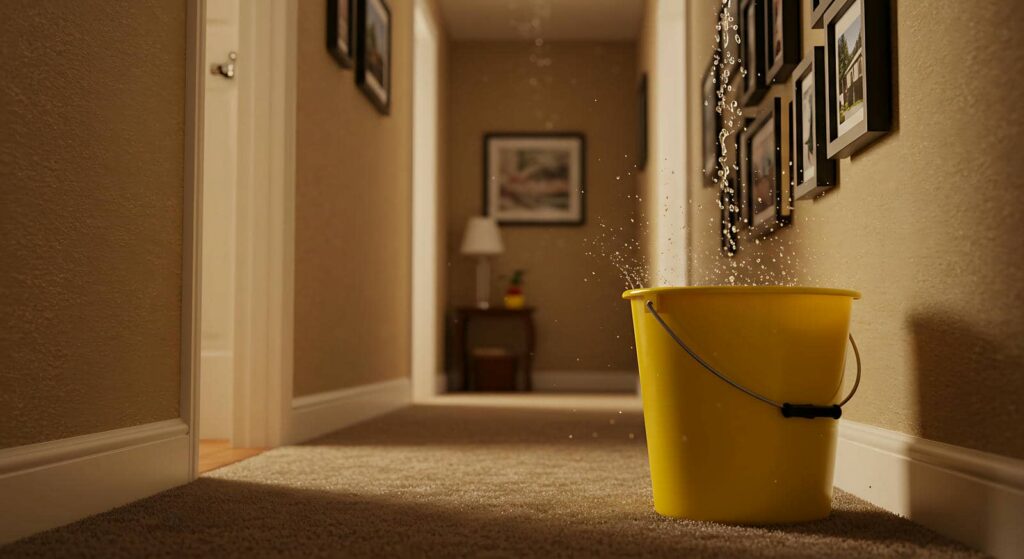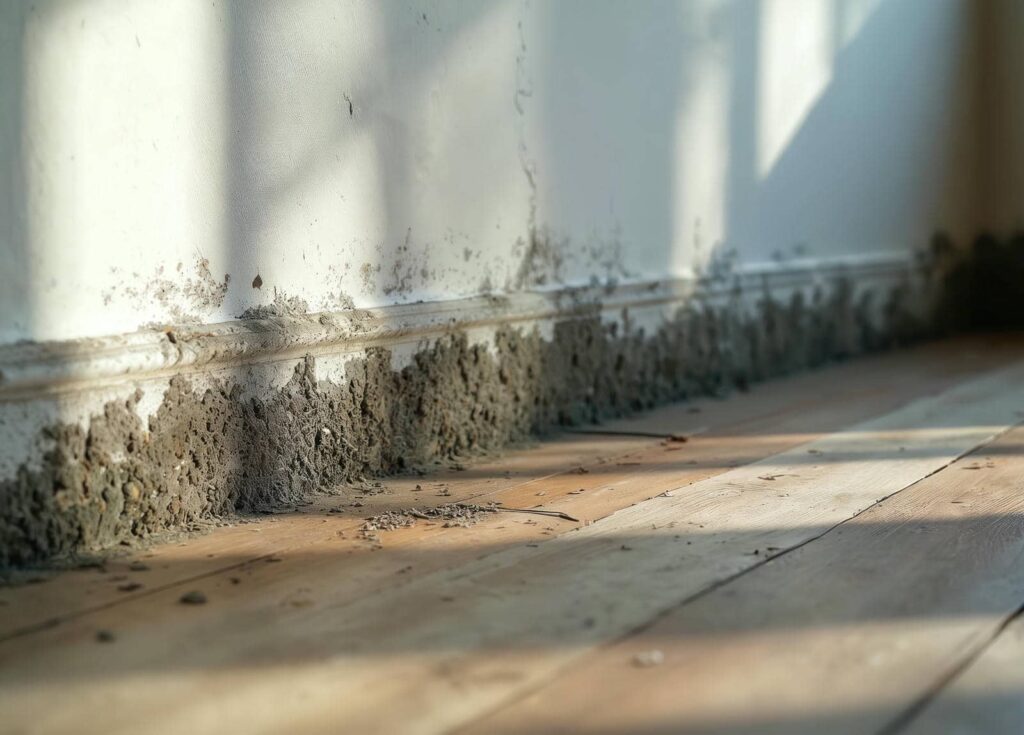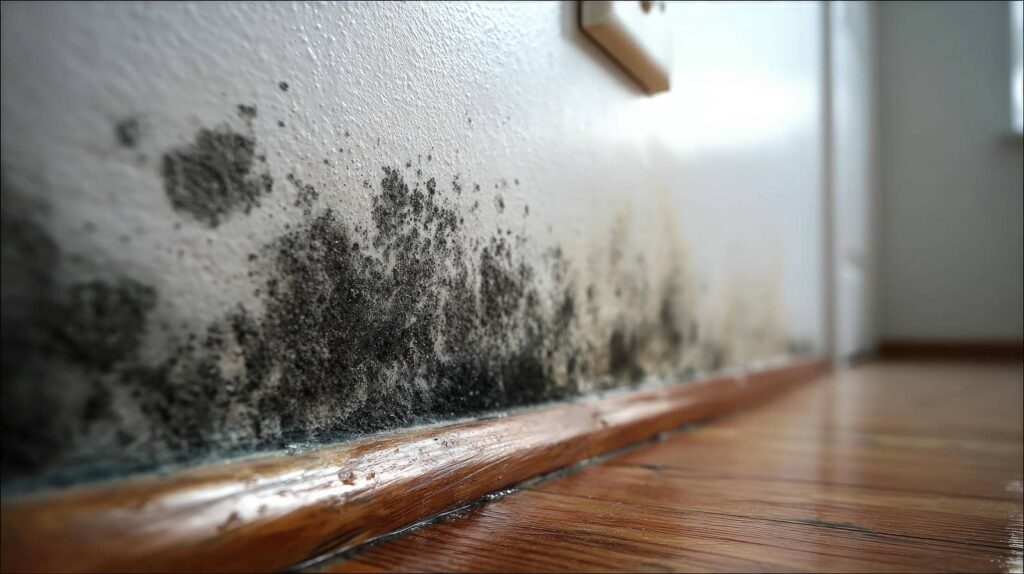Contents
When dealing with mold post-flood, you’ll want to tackle it efficiently and thoroughly to prevent future issues. Understanding the best techniques for mold removal is important in safeguarding your health and property. From evaluating the extent of the damage to implementing preventive measures, each step plays an essential role in a successful recovery process. Stay tuned to discover the expert-recommended strategies that can significantly improve your mold remediation efforts.
Key Takeaways
- Thoroughly inspect for mold contamination and hidden water sources.
- Dispose of contaminated materials properly and clean affected surfaces meticulously.
- Apply mold inhibitors to prevent future growth and enhance ventilation.
- Ensure proper ventilation, drying, and use of fans and dehumidifiers.
- Utilize effective cleaning techniques and seek professional help for extensive mold growth.
Assessing the Mold Damage
When evaluating the mold damage post-flood recovery, thoroughly examining all affected areas for signs of contamination is important. Start by examining moisture levels in the environment, as mold thrives in damp conditions. Conduct a detailed mold inspection by visually inspecting walls, ceilings, floors, and hidden spaces like crawl spaces and attics. Use tools like moisture meters to detect hidden water sources promoting mold growth. Look for visible signs of mold, such as discoloration, musty odors, or water stains. Pay close attention to areas with poor ventilation or where water may have accumulated during the flood.
Understanding the extent of mold contamination is vital in developing an effective removal plan. Take note of the types of materials affected, as porous materials like drywall and insulation may need to be removed if heavily contaminated. Document your findings through photographs and detailed notes to track progress and ensure thorough remediation. Remember, a detailed assessment is the first step towards successful mold removal and a safe living environment.
Removing Contaminated Materials
Identify the contaminated areas within your space, making sure nothing is overlooked during the cleanup process.
Dispose of all contaminated items properly to prevent further spread of mold spores.
Clean all affected surfaces meticulously to eradicate any remaining traces of mold and ensure a thorough restoration of your environment.
Identify Contaminated Areas
To effectively address the contamination in your home post-flood, you must thoroughly inspect and remove all materials that have been affected by mold growth. Start by evaluating the extent of mold spread to identify contaminated areas. Mold thrives in damp environments, compromising air quality and posing health hazards.
Look for visible mold growth on walls, ceilings, floors, carpets, and furniture. Pay close attention to areas with high moisture levels, such as basements, bathrooms, and kitchens. Use protective gear like gloves and masks during this process to prevent exposure to mold spores. Inspect hidden spaces like behind walls and under carpets where mold can also lurk.
Properly identifying contaminated areas is essential for effective mold removal.
Dispose of Contaminated Items
Inspect contaminated areas and promptly remove all affected materials to mitigate mold growth and secure a safe living environment post-flood. When handling contaminated items, it is important to have a well-thought-out item disposal strategy. Proper contaminated materials management is essential to prevent the further spread of mold spores and safeguard the safety of your living space. Consider the table below for guidance on disposing of various contaminated items effectively.
| Contaminated Items | Disposal Method |
|---|---|
| Carpets & Rugs | Discard if heavily contaminated; clean and dry if slightly affected |
| Upholstered Furniture | Dispose of if severely damaged; sanitize and air out if mildly impacted |
| Mattresses | Replace if extensively contaminated; sanitize and sun-dry if minimally affected |
| Books & Paper Products | Freeze items before disposal to halt mold growth; discard if irreversibly damaged |
Clean Affected Surfaces
When addressing the task of cleaning affected surfaces to remove contaminated materials post-flood, prioritize thoroughness and precision to effectively eliminate potential mold growth. Mold prevention is key in this process, and surface cleaning plays an important role.
Begin by wearing protective gear such as gloves, goggles, and masks. Use a detergent solution to scrub surfaces thoroughly, ensuring all visible dirt and grime are removed. Pay special attention to hidden or hard-to-reach areas where moisture may linger.
After cleaning, disinfect the surfaces with a bleach solution to kill any remaining mold spores. Properly drying the area with dehumidifiers and fans is essential to prevent mold regrowth.
Using Mold Inhibitors
To effectively combat mold growth post-flood, applying mold inhibitors is essential. These inhibitors work by creating a protective barrier that helps prevent future mold infestations.
Mold Inhibitor Application
Consider applying a mold inhibitor solution after completing the initial steps of mold removal to prevent future growth. Applying sealants can help in preventing mold from recurring in areas prone to moisture buildup.
Surface treatments, such as using mold inhibitors, can create a protective barrier that discourages mold growth. These inhibitors work by disrupting the mold’s growth cycle and can be particularly useful in areas with high humidity levels.
Preventing Future Mold
Apply a mold inhibitor solution as a protective measure against future mold growth, particularly in areas susceptible to moisture buildup. To prevent mold from reoccurring, focus on moisture control. Ensure proper ventilation in high-humidity areas like bathrooms, kitchens, and basements.
Use exhaust fans or open windows when cooking or showering to reduce moisture levels. Keep indoor humidity below 60% by using dehumidifiers. Repair any leaks promptly and enhance ventilation by adding vents or fans where necessary. Regularly check for condensation on windows or walls and address it promptly.
Proper Ventilation and Drying
For successful mold removal after a flood, make sure the space is properly ventilated and thoroughly dried to prevent further growth and spread. Effective drying techniques and proper air circulation play an essential role in eliminating excess moisture, creating an environment where mold struggles to survive.
Begin by opening windows and using fans to improve air circulation. Consider using dehumidifiers to control moisture levels, especially in humid areas. Focus on drying out affected materials like carpets, furniture, and drywall promptly to inhibit mold development. Ventilation strategies such as using exhaust fans in bathrooms and kitchens can help reduce moisture buildup.
Additionally, inspect and repair any leaks in plumbing, walls, or roofs to prevent water infiltration. By maintaining proper ventilation and employing suitable drying methods, you create an inhospitable environment for mold, aiding in its removal and preventing future growth. Remember, thorough drying and adequate air circulation are key elements in the fight against post-flood mold issues.
Conducting Thorough Cleaning
Thorough cleaning is essential in eradicating mold and preventing its recurrence following a flood. To effectively combat mold growth, it is vital to employ the right cleaning techniques. Here are some key methods to help you in your mold prevention efforts:
| Cleaning Technique | Description | Benefits |
|---|---|---|
| Scrubbing with Detergent | Use a mixture of detergent and water to scrub affected surfaces thoroughly to remove mold spores. | Helps physically remove mold and prevent regrowth. |
| Vinegar Solution | Vinegar is a natural antimicrobial agent. Mix vinegar with water and spray it on mold-infested areas. | Kills mold and disinfects surfaces effectively. |
| Baking Soda Paste | Create a paste using baking soda and water. Apply it to surfaces, scrub, and then wipe clean. | Absorbs moisture, eliminates odors, and fights mold. |
| Hydrogen Peroxide Application | Hydrogen peroxide is an antifungal, antibacterial, and antiviral solution effective against mold. | Kills mold spores and prevents further contamination. |
Seeking Professional Help
Wondering when to seek professional assistance for mold removal post-flood?
While DIY solutions can be effective for minor mold issues, it’s important to recognize when the situation calls for the expertise of mold professionals. If the affected area is extensive, covering more than 10 square feet, or if the mold growth is severe, with a musty odor lingering even after thorough cleaning, it’s time to contemplate bringing in mold experts.
Mold experts have the knowledge, tools, and experience to assess the extent of the mold infestation accurately and safely remove it from your home.
Additionally, if you have health concerns such as allergies, asthma, or other respiratory issues, exposing yourself to mold during removal can exacerbate these conditions. Mold professionals can mitigate these risks by implementing proper containment measures and using specialized equipment to prevent mold spores from spreading further.
Review
Implementing the best mold removal techniques post-flood recovery is essential for a successful restoration.
Following the outlined steps, you can effectively eradicate mold, prevent future growth, and ensure a safe and healthy environment in your home.
Proper containment, ventilation, and cleaning are key to a successful mold remediation process.




